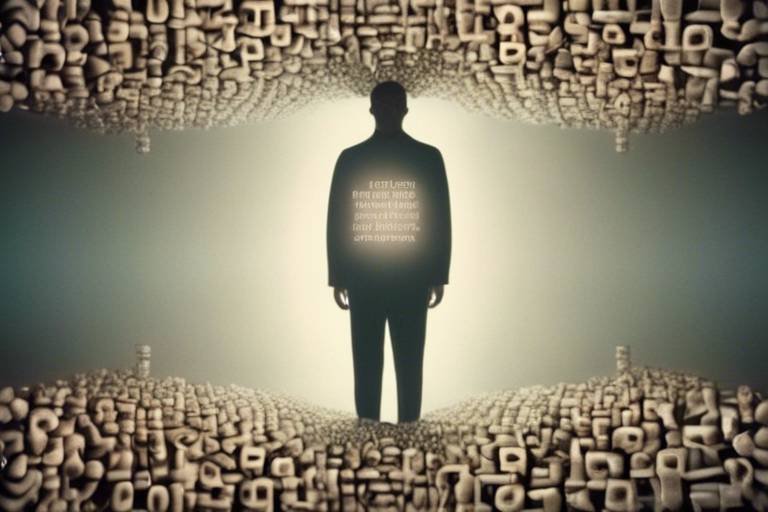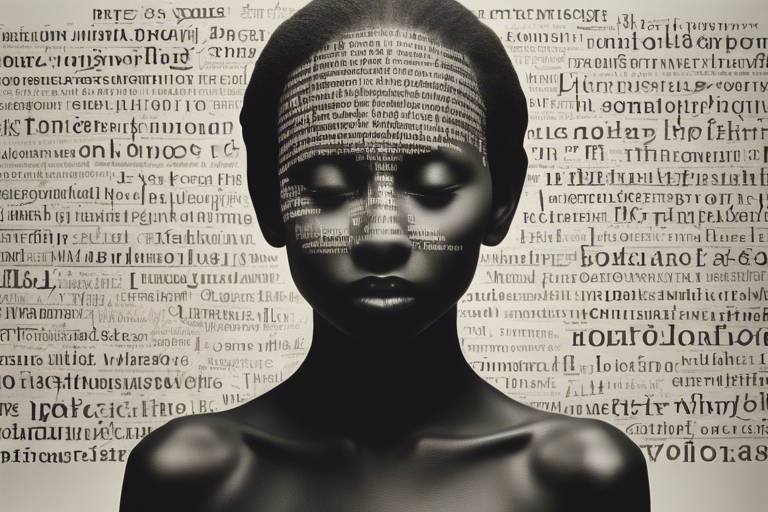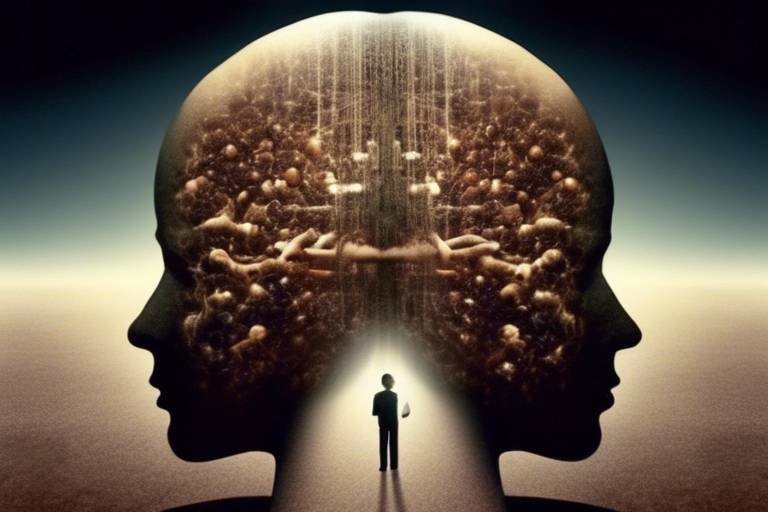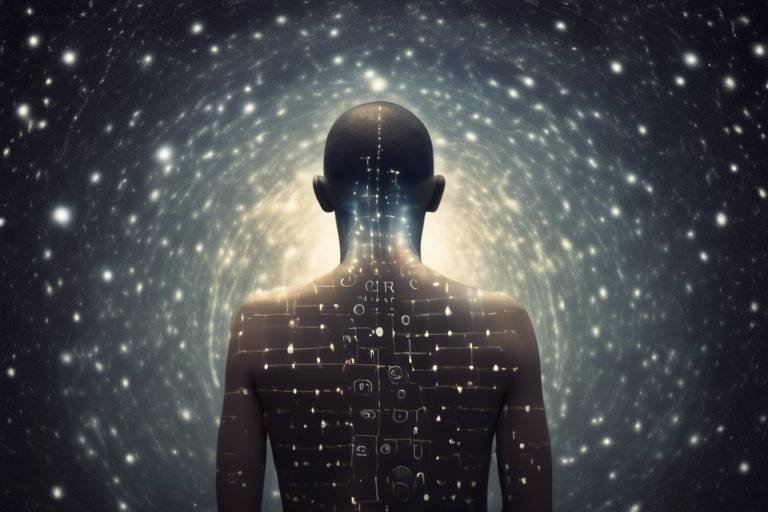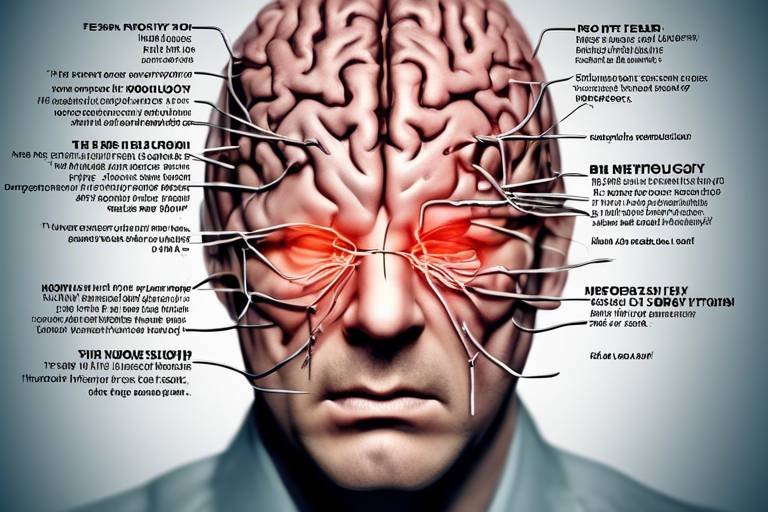Can Multiple Consciousnesses Exist in One Mind?
This article explores the intriguing concept of multiple consciousnesses within a single mind, examining psychological, philosophical, and neuroscientific perspectives on the phenomenon and its implications for our understanding of identity and self.
Understanding consciousness is fundamental to exploring whether multiple consciousnesses can coexist. At its core, consciousness refers to our awareness of ourselves and our environment. But what does that really mean? Imagine consciousness as a vast ocean, with each wave representing a thought, feeling, or perception. The complexity of this ocean makes it difficult to define consciousness in simple terms. Various theories attempt to unravel this enigma, from the notion of a singular stream of awareness to the idea that our minds can host multiple, distinct experiences simultaneously. The exploration of consciousness is not just a scientific endeavor; it’s a philosophical quest that challenges our very notions of self and identity.
Psychology offers fascinating insights into how multiple consciousnesses might manifest, particularly through conditions like dissociative identity disorder (DID). DID is often misunderstood, yet it provides a compelling case for the existence of multiple consciousnesses within one individual. Imagine a person who experiences different identities, each with its own distinct memories, behaviors, and ways of perceiving the world. This phenomenon raises critical questions about the nature of the self. Are these identities separate consciousnesses, or are they simply different facets of a singular mind? To delve deeper, let’s examine some case studies and psychological frameworks that help explain these phenomena.
Dissociative Identity Disorder exemplifies the existence of multiple consciousnesses. Individuals with DID may have distinct identities, often referred to as "alters," that can take control of the person’s behavior. Symptoms can include gaps in memory, a sense of detachment from oneself, and significant distress. Diagnosing DID requires careful evaluation by mental health professionals, as it often co-occurs with other mental health issues. The lived experiences of those affected by this complex condition reveal a rich tapestry of human experience, challenging our conventional understanding of identity and selfhood.
Altered states, such as those induced by meditation, hypnosis, or psychedelics, can also reveal aspects of multiple consciousnesses. These experiences often challenge traditional notions of a singular self. For instance, during deep meditation, practitioners may report feelings of unity with the universe or a sense of detachment from their personal identity. Such experiences can feel profoundly transformative, suggesting that our understanding of consciousness may be far more intricate than we once thought. Could it be that these altered states provide glimpses into other consciousnesses residing within us?
Philosophical inquiries into the self and identity raise profound questions about the nature of consciousness. Notable philosophers have debated whether a person can maintain a singular identity while hosting multiple consciousnesses. Some argue that our identity is a continuous narrative, while others propose that it can be fragmented. The exploration of these theories not only enhances our understanding of consciousness but also invites us to reconsider what it means to be human.
The concept of personal identity is crucial when examining multiple consciousnesses. Philosophers like John Locke suggested that personal identity is tied to memory and consciousness. If a person cannot remember past experiences due to the presence of multiple consciousnesses, does that fragment their identity? Alternatively, could these separate consciousnesses coexist within a larger framework of self? The answers to these questions are not straightforward, but they illuminate the complexities of our understanding of identity.
The debate between dualism and materialism significantly influences views on consciousness. Dualists argue that the mind and body are distinct, allowing for the possibility of multiple consciousnesses. In contrast, materialists contend that consciousness arises solely from physical processes in the brain. This section contrasts these perspectives, highlighting their implications for understanding multiple consciousnesses within the mind. If consciousness is purely a product of brain activity, can we truly entertain the notion of multiple consciousnesses existing simultaneously?
Neuroscience provides a biological basis for understanding consciousness. Current research on brain function reveals how different areas contribute to our conscious experience. For example, brain imaging studies have shown that various regions activate during different cognitive tasks, suggesting that consciousness may not be as unified as we once believed. This section reviews these findings and discusses how they relate to the possibility of multiple consciousnesses existing simultaneously.
Investigating how different areas of the brain contribute to consciousness can illuminate the potential for multiple consciousnesses. Studies indicate that the brain operates through a network of regions, each playing a role in our conscious experience. For instance, the prefrontal cortex is associated with decision-making and self-awareness, while the limbic system is tied to emotions. This complex interplay raises questions about whether distinct consciousnesses could emerge from these varying functions.
This subsection explores the neural correlates of consciousness and how they may support or refute the existence of multiple consciousnesses within a single mind. Research has identified specific neural patterns associated with conscious awareness, but whether these patterns can accommodate multiple identities remains a topic of ongoing investigation. The implications of this research could reshape our understanding of consciousness itself.
- What is consciousness? Consciousness refers to our awareness of thoughts, feelings, and surroundings.
- Can one person have multiple identities? Yes, conditions like Dissociative Identity Disorder demonstrate this phenomenon.
- How does neuroscience explain consciousness? Neuroscience studies brain activity to understand how consciousness arises from neural processes.
- What are altered states of consciousness? These are experiences that differ from normal waking consciousness, often induced by meditation or substances.

The Nature of Consciousness
Understanding consciousness is fundamental to exploring whether multiple consciousnesses can coexist within a single mind. But what exactly is consciousness? At its core, consciousness can be defined as the state of being aware of and able to think and perceive one's surroundings, thoughts, and feelings. It's like the spotlight of a theater, illuminating certain aspects of our mental stage while leaving others in the shadows. This concept is not only complex but also layered with various interpretations across different fields of study.
There are numerous theories regarding the nature of consciousness. Some argue it is a byproduct of brain activity, while others suggest it transcends mere physical processes. For instance, the philosophical theory of dualism posits that the mind and body are distinct entities, leading to the idea that consciousness could exist independently of the physical brain. In contrast, the materialistic view holds that consciousness is entirely rooted in brain function, with no separate existence beyond it. This ongoing debate raises questions about the essence of our identity and whether we are merely the sum of our neural connections or something more profound.
Moreover, the complexities surrounding consciousness extend to its various states. We experience consciousness not only in our waking hours but also in dreams, altered states, and even during meditation. Each of these states presents a different facet of consciousness, suggesting that it is not a monolithic entity but rather a spectrum. For instance, during deep meditation, individuals often report a sense of unity with the universe, blurring the lines of personal identity. This phenomenon invites us to consider the possibility that our consciousness may not be singular but instead may encompass multiple layers or dimensions.
As we dive deeper into the study of consciousness, it's essential to recognize its implications for our understanding of the self. If consciousness can be fragmented or altered, what does that mean for our identity? Are we simply a collection of experiences and memories, or is there a core self that remains constant despite these fluctuations? These questions are not just academic; they resonate with our everyday experiences and challenge our perceptions of who we are.
In summary, the nature of consciousness is a rich and intricate tapestry woven from threads of psychology, philosophy, and neuroscience. Each thread contributes to a greater understanding of how consciousness operates and whether it can exist in multiple forms within a single mind. As we continue to explore this fascinating concept, we may uncover insights that not only reshape our understanding of consciousness but also redefine our sense of self.

Psychological Perspectives
When we think about the mind, we often envision a singular, cohesive entity, much like a well-oiled machine. However, psychological perspectives reveal a more intricate reality, suggesting that the mind can harbor multiple consciousnesses, each with its own distinct personality and experiences. This notion becomes particularly fascinating when we delve into conditions like Dissociative Identity Disorder (DID), which serves as a prime example of how multiple consciousnesses can manifest within a single individual. But how does this happen? What does it mean for our understanding of the self?
DID is a complex psychological condition characterized by the presence of two or more distinct identities or personality states, each with its own way of perceiving and interacting with the world. Individuals with DID often experience gaps in memory, which can leave them bewildered about their own actions and thoughts. Imagine waking up one day with no recollection of the previous week—this is a reality for many affected by this disorder. The symptoms can vary widely, ranging from mild forgetfulness to severe disruptions in identity, leading to profound impacts on everyday life.
To better understand the implications of DID, let’s explore some key aspects:
| Aspect | Description |
|---|---|
| Symptoms | Memory loss, identity disturbance, and dissociation. |
| Diagnosis | Based on clinical assessment and the DSM-5 criteria. |
| Treatment | Psychotherapy, including cognitive-behavioral therapy and trauma-focused therapy. |
Beyond DID, altered states of consciousness present another intriguing angle to explore. These states can be induced through various means, such as meditation, hypnosis, or even the use of psychedelics. During these experiences, individuals often report feelings of interconnectedness, detachment from the self, or even encounters with what they perceive as other consciousnesses. This raises the question: are these experiences merely hallucinations, or do they hint at the existence of multiple consciousnesses vying for attention within our minds?
For many, altered states can serve as a gateway to understanding the complexities of consciousness. When one enters a deep meditative state, for instance, the boundaries of the self may begin to dissolve, leading to profound insights and revelations. It's almost as if the mind is a vast ocean, with each wave representing a different consciousness that occasionally rises to the surface. While traditional psychology has often emphasized a singular self, these experiences challenge that notion, suggesting a more fragmented and multifaceted understanding of identity.
In summary, the psychological perspectives on multiple consciousnesses invite us to reconsider our understanding of the mind. From the clinical realities of DID to the transformative experiences of altered states, the evidence suggests that our consciousness may not be as singular as we once thought. Instead, it may be a rich tapestry of identities, experiences, and perceptions, each contributing to the overall narrative of who we are. As we continue to explore these psychological dimensions, we may uncover even more about the profound and mysterious nature of consciousness itself.
- What is Dissociative Identity Disorder?
DID is a mental health condition characterized by the presence of two or more distinct identities or personality states, each with its own pattern of perceiving and interacting with the world. - How does altered consciousness relate to multiple consciousnesses?
Altered states can reveal aspects of the self that challenge the traditional notion of a singular identity, suggesting the presence of multiple consciousnesses within the mind. - Can therapy help individuals with DID?
Yes, psychotherapy, particularly trauma-focused and cognitive-behavioral therapies, is often effective in helping individuals with DID integrate their identities and manage symptoms.

Dissociative Identity Disorder
Dissociative Identity Disorder (DID), formerly known as multiple personality disorder, is a fascinating yet often misunderstood condition that exemplifies the existence of multiple consciousnesses within a single mind. Imagine a person hosting a party in their brain, where each guest represents a different identity, complete with unique memories, behaviors, and ways of perceiving the world. This disorder typically arises as a coping mechanism in response to severe trauma, particularly during childhood, leading to the development of distinct identities or "alters" that can take control at different times.
Individuals with DID may experience significant gaps in memory, which can be disconcerting for them and often lead to confusion about their own identities. It's as if they are watching a movie of their life, but certain scenes are missing, leaving them to piece together their experiences from the fragments they can recall. The symptoms of DID can vary widely, but they generally include:
- Presence of two or more distinct identities or personality states.
- Recurrent gaps in the recall of everyday events, important personal information, and traumatic events.
- Significant distress or impairment in social, occupational, or other important areas of functioning.
Diagnosing DID is a complex process that requires a thorough evaluation by a mental health professional. It often involves interviews, psychological testing, and a detailed history of the individual's experiences. The diagnosis can be challenging because DID shares symptoms with other mental health disorders, such as PTSD and borderline personality disorder. However, the key differentiator is the presence of distinct identities that can take control, each with its own sense of self and behavior.
The lived experiences of those affected by DID are as varied as the personalities they embody. Some individuals describe their alters as protective figures, helping them navigate the world and cope with trauma. Others may find themselves in conflict with their alters, leading to internal struggles and emotional turmoil. This dynamic can create a rich tapestry of experiences, with each identity contributing to the individual's overall sense of self, albeit in a fragmented manner.
Despite the challenges associated with DID, many individuals find strength in their multiplicity. They may develop unique coping strategies, support networks, and therapeutic relationships that help them integrate their identities and heal from past traumas. This journey towards integration can be a powerful testament to the resilience of the human spirit, as individuals learn to embrace all facets of themselves, even those that may seem at odds with one another.
In conclusion, Dissociative Identity Disorder provides a compelling case for the existence of multiple consciousnesses within a single mind. It challenges our traditional understanding of identity and self, inviting us to consider the complexities of human experience. As we continue to explore this intriguing phenomenon, it becomes increasingly clear that the mind is not a singular entity but rather a rich, multifaceted landscape where different identities can coexist, each contributing to the overall narrative of the self.
- What causes Dissociative Identity Disorder? DID often develops as a response to severe trauma, particularly during formative years in childhood.
- Can individuals with DID live normal lives? Yes, with appropriate treatment and support, many individuals with DID can lead fulfilling lives.
- Is Dissociative Identity Disorder the same as schizophrenia? No, DID is characterized by the presence of multiple identities, while schizophrenia involves a disconnect from reality and may include hallucinations.

Altered States of Consciousness
Altered states of consciousness are fascinating phenomena that can provide profound insights into the nature of our minds. These states can be induced through various means, such as meditation, hypnosis, sensory deprivation, and the use of psychedelics. Each of these methods can lead to experiences that seem to stretch the boundaries of our understanding of a singular self. Imagine diving into a pool of thoughts, where the water is murky and the reflections are fragmented; this is akin to what happens in altered states, where multiple aspects of consciousness may emerge.
When individuals engage in deep meditation, for instance, they often report feelings of unity with the universe or a sense of detachment from their usual self. This detachment can feel like stepping outside of oneself, observing thoughts and emotions as if they belong to someone else. Such experiences challenge the conventional notion that we possess a singular, coherent identity. Instead, they suggest that our consciousness may be more complex and layered than we typically recognize.
Moreover, psychedelics like psilocybin or LSD can induce experiences where users report encountering various facets of their psyche. These substances can lead to what is often described as a "mystical experience," where the boundaries of self dissolve. Users frequently express feelings of interconnectedness with others and the world around them, revealing a fluidity in consciousness that contrasts sharply with everyday experiences. This leads to a compelling question: if our consciousness can fragment and reform in these states, what does that say about our typical understanding of identity?
To delve deeper into this topic, we can categorize altered states of consciousness into a few key types:
- Natural Altered States: These include states induced by sleep, daydreaming, or intense focus.
- Induced Altered States: Achieved through meditation, hypnosis, or sensory deprivation.
- Substance-Induced Altered States: Resulting from the use of drugs, such as psychedelics or hallucinogens.
Each of these states can lead to a richer understanding of how consciousness operates. For example, during deep meditation, practitioners often report a heightened sense of awareness and clarity. This state allows them to observe their thoughts without attachment, almost as if they are watching a movie unfold. In contrast, the use of psychedelics may lead to chaotic experiences that can feel overwhelmingly intense but also reveal hidden aspects of the psyche.
In the context of multiple consciousnesses, altered states serve as a window into the potential for diverse experiences within a single mind. They challenge the idea that our consciousness is a monolithic entity, suggesting instead that it can be multifaceted and dynamic. This exploration not only enriches our understanding of consciousness but also raises important questions about personal identity and the nature of the self.
Ultimately, altered states of consciousness remind us that our understanding of the mind is still evolving. As we continue to explore these fascinating experiences, we may uncover new dimensions of consciousness that redefine what it means to be human.
- What are altered states of consciousness? Altered states of consciousness are mental states that differ significantly from the normal waking state, often induced by meditation, hypnosis, or substances.
- Can altered states reveal multiple consciousnesses? Yes, experiences in altered states can suggest the presence of multiple facets of consciousness, challenging the idea of a singular self.
- Are altered states safe? While many people have positive experiences, altered states can also lead to challenging or distressing experiences, especially when induced by substances.

Philosophical Implications
The exploration of multiple consciousnesses within a single mind opens up a Pandora's box of philosophical inquiries that challenge our understanding of identity and self. Philosophers have long grappled with the nature of consciousness, and the idea that one person might harbor multiple consciousnesses raises profound questions about what it means to be 'you.' If consciousness is the essence of our identity, can it truly be fragmented, or does this imply a more complex, perhaps even chaotic, understanding of the self?
To delve deeper, we can examine several philosophical theories that provide different lenses through which to view this complexity. For instance, the concept of personal identity is crucial here. Philosophers like John Locke argued that personal identity is tied to memory and consciousness. If multiple consciousnesses exist, how do memories and experiences get shared or divided among them? This fragmentation could suggest that identity is not a singular, continuous thread but rather a tapestry woven from various experiences and perspectives, each with its own consciousness.
Moreover, the debate between dualism and materialism significantly influences our understanding of consciousness. Dualists, like René Descartes, posit that the mind and body are distinct entities, suggesting that consciousness could exist independently of the physical brain. This perspective might allow for the possibility of multiple consciousnesses coexisting. On the other hand, materialists argue that consciousness arises solely from physical processes in the brain. If this is the case, then the notion of multiple consciousnesses becomes more contentious, as it would imply that our brains could somehow create separate yet simultaneous streams of consciousness, a notion that seems to defy our current understanding of neuroscience.
To illustrate these philosophical implications, consider the following table that summarizes key differences between dualism and materialism:
| Aspect | Dualism | Materialism |
|---|---|---|
| Nature of Consciousness | Mind and body are separate | Mind arises from physical processes |
| Identity | Identity can transcend physical existence | Identity is tied to physical continuity |
| Possibility of Multiple Consciousnesses | More feasible | Challenging to conceptualize |
In summary, the philosophical implications of multiple consciousnesses challenge our traditional notions of selfhood and identity. They compel us to rethink what it means to be a person in a world where the boundaries of consciousness might be more fluid than we ever imagined. Are we merely the sum of our experiences, or is there a deeper essence that binds us together as a singular identity? As we navigate these profound questions, it becomes evident that our understanding of consciousness is not just a scientific endeavor but a deeply philosophical one that may redefine our very existence.
- Can a person have multiple consciousnesses? Yes, some psychological conditions, like Dissociative Identity Disorder, illustrate how multiple consciousnesses can manifest within a single individual.
- What do philosophers say about personal identity? Philosophers have varied perspectives, with some arguing that personal identity is tied to memory and consciousness, while others emphasize physical continuity.
- How does neuroscience relate to consciousness? Neuroscience investigates the biological underpinnings of consciousness, exploring how different brain functions contribute to our understanding of self.

Personal Identity
The concept of is a cornerstone in the exploration of multiple consciousnesses. It raises profound questions about what it means to be 'you.' Are we merely a collection of memories, experiences, and thoughts, or is there something deeper that binds these elements together? Philosophers have long debated this, and their insights can help us understand the complexities of identity, especially when considering the possibility of multiple consciousnesses coexisting within a single individual.
One of the most compelling theories comes from the philosopher John Locke, who argued that personal identity is tied to consciousness rather than the substance of the body. According to Locke, if you can remember experiences and maintain a sense of continuity in your thoughts, you are the same person, regardless of any physical changes. This perspective becomes particularly interesting when examining conditions like Dissociative Identity Disorder (DID), where individuals may have distinct identities or alters, each with its own memories and experiences. In such cases, the question arises: how does one reconcile the fragmented identities with a cohesive sense of self?
Moreover, the theory of Bundle Theory, proposed by philosopher David Hume, posits that the self is nothing more than a collection of perceptions and experiences. If we apply this theory to the idea of multiple consciousnesses, it suggests that our identity is not a singular entity but rather a tapestry woven from various threads of experiences, thoughts, and emotions. This perspective aligns with the lived experiences of those with DID, who often describe their alters as distinct entities that contribute to their overall identity.
In addition to these philosophical theories, the notion of personal identity is further complicated by the concept of continuity. For instance, if an individual with DID experiences a significant shift in their personality or identity due to trauma, how do we define their personal identity? Is it the sum of all their experiences, or does the emergence of new consciousnesses fragment their identity in a way that challenges our understanding of the self?
To illustrate these complexities, consider the following table that summarizes key philosophical perspectives on personal identity:
| Theory | Key Idea | Implication for Multiple Consciousnesses |
|---|---|---|
| Locke's Theory | Identity is tied to consciousness and memory. | Multiple consciousnesses may challenge the continuity of identity. |
| Bundle Theory | The self is a collection of perceptions and experiences. | Identity is fluid and can encompass multiple consciousnesses. |
| Continuity Theory | Identity is defined by the continuity of experiences over time. | Fragmentation may disrupt the sense of a singular identity. |
Ultimately, the exploration of personal identity in the context of multiple consciousnesses invites us to reconsider our understanding of what it means to be human. It challenges the notion of a fixed, unchanging self and opens the door to a more dynamic view of identity—one that acknowledges the complexity of our experiences and the potential for diverse consciousnesses to coexist within a single mind.
- What is personal identity? Personal identity refers to the qualities, beliefs, and experiences that make one individual distinct from another.
- Can multiple consciousnesses exist in one person? Yes, conditions like Dissociative Identity Disorder demonstrate that multiple consciousnesses can coexist within a single individual.
- How do philosophers view personal identity? Philosophers have various theories, including Locke's focus on memory and Hume's Bundle Theory, which suggest that identity is not a singular, fixed entity.
- What implications does this have for understanding self? It suggests that our understanding of self is more complex and fluid than traditionally believed, allowing for various experiences and identities to coexist.

Dualism vs. Materialism
When we dive into the debate of dualism versus materialism, we find ourselves at the crossroads of philosophy and science, each offering a unique lens through which to view consciousness. Dualism, famously championed by philosophers like René Descartes, posits that the mind and body are fundamentally different substances. According to this view, consciousness exists separately from the physical brain, suggesting that multiple consciousnesses could potentially inhabit a single mind, akin to a theater with multiple actors playing different roles on the same stage. This idea raises fascinating questions about identity and the essence of being.
On the flip side, materialism argues that everything, including consciousness, is a product of physical processes. Materialists assert that our thoughts, feelings, and identities are intricately tied to the biological workings of the brain. This perspective suggests that consciousness arises from neural activity, making it challenging to justify the existence of multiple consciousnesses within one individual. Imagine a computer where all programs run from a single operating system; if the system crashes, all programs cease to function. In this analogy, the brain's singularity conflicts with the notion of multiple consciousnesses.
The implications of these two perspectives are profound. For instance, if dualism holds true, it opens the door to exploring phenomena like dissociative identity disorder, where individuals experience distinct identities that may operate independently. Conversely, if materialism is accurate, it compels us to seek neurological explanations for these experiences, focusing on brain function and structure. To illustrate this dichotomy, consider the following table:
| Aspect | Dualism | Materialism |
|---|---|---|
| Nature of Consciousness | Separate from the physical | Arises from physical processes |
| Identity | Multiple identities possible | Single identity tied to brain function |
| Implications for Mental Health | Potential for spiritual or non-physical explanations | Focus on biological and neurological treatments |
Ultimately, the dualism versus materialism debate shapes our understanding of consciousness and identity. It challenges us to consider whether our experiences are merely byproducts of neural interactions or if they stem from a more complex interplay of mind and body. This discourse is not just academic; it has real-world implications for how we approach mental health, personal identity, and even our understanding of life after death. So, which side do you lean towards? Are we just sophisticated biological machines, or is there something more ethereal at play?
- What is dualism? Dualism is the philosophical view that the mind and body are distinct entities, suggesting that consciousness exists separately from the physical brain.
- What is materialism? Materialism is the belief that everything, including consciousness, arises from physical processes and that mental states are a result of brain activity.
- Can multiple consciousnesses exist in one mind? This question is at the heart of the dualism versus materialism debate, with dualism suggesting it is possible and materialism arguing against it.
- How does this debate affect mental health? Understanding whether consciousness is separate from the brain can influence treatment approaches for mental health conditions, such as dissociative identity disorder.

Neuroscientific Insights
When we dive into the realm of neuroscience, we find ourselves navigating a complex landscape that holds the key to understanding consciousness. Neuroscience seeks to unravel the intricate workings of the brain, which is believed to be the epicenter of our conscious experience. One of the most fascinating aspects of this field is how it investigates the potential for multiple consciousnesses to exist within a single mind. To grasp this concept fully, we must first explore how different brain regions contribute to our overall sense of self and awareness.
Research has shown that consciousness is not localized to one specific area of the brain; rather, it emerges from the dynamic interactions between various regions. For instance, the prefrontal cortex, responsible for higher-order functions like decision-making and social behavior, plays a crucial role in our conscious experience. Meanwhile, the temporal lobes are involved in processing auditory information and memory, which are essential for forming a coherent narrative of our identity. This interplay suggests that if different regions can operate independently, it raises the question: could they give rise to distinct consciousnesses?
To illustrate this point, consider the phenomenon of split-brain patients. These individuals have undergone surgery to sever the corpus callosum, the bundle of nerve fibers connecting the left and right hemispheres of the brain. Research on these patients has revealed intriguing insights into how each hemisphere can exhibit its own consciousness, sometimes leading to conflicting behaviors and thoughts. For example, one hemisphere may recognize an object while the other does not, suggesting that consciousness can be fragmented yet still function within the same individual.
Moreover, advancements in neuroimaging techniques, such as fMRI (functional Magnetic Resonance Imaging), have enabled scientists to observe brain activity in real-time. These studies have uncovered neural correlates of consciousness, which are specific brain patterns associated with conscious awareness. However, the relationship between these neural correlates and the experience of multiple consciousnesses remains a hot topic of debate. While some researchers argue that distinct neural circuits could support separate consciousnesses, others caution against oversimplifying the complexity of brain function.
Another area worth exploring is the impact of altered states of consciousness on our understanding of the mind. Experiences induced by meditation, psychedelics, or even extreme stress can lead to a sense of detachment from one's self. These altered states challenge the conventional notion of a singular, cohesive identity. For instance, during a psychedelic experience, individuals often report feeling as though they are merging with their surroundings or experiencing life from multiple perspectives simultaneously. This raises profound questions about the nature of consciousness and whether it can be fragmented or expanded beyond the typical confines of the self.
As we continue to explore these neuroscientific insights, it becomes increasingly clear that the brain is capable of producing a rich tapestry of consciousness. Whether through the lens of split-brain patients, altered states, or the intricate web of neural connections, the possibility of multiple consciousnesses invites us to rethink our understanding of identity and self. As we peel back the layers of the mind, we may discover that the essence of who we are is far more complex than we ever imagined.
- What is consciousness? Consciousness refers to the state of being aware of and able to think about one's own existence, thoughts, and surroundings.
- Can multiple consciousnesses exist in one person? Yes, conditions like dissociative identity disorder illustrate how multiple consciousnesses can manifest within a single individual.
- How do neuroscientists study consciousness? Neuroscientists use techniques like fMRI to observe brain activity and identify neural correlates of consciousness.
- What are altered states of consciousness? Altered states of consciousness are significantly different from normal waking consciousness and can occur through meditation, psychedelics, or extreme stress.
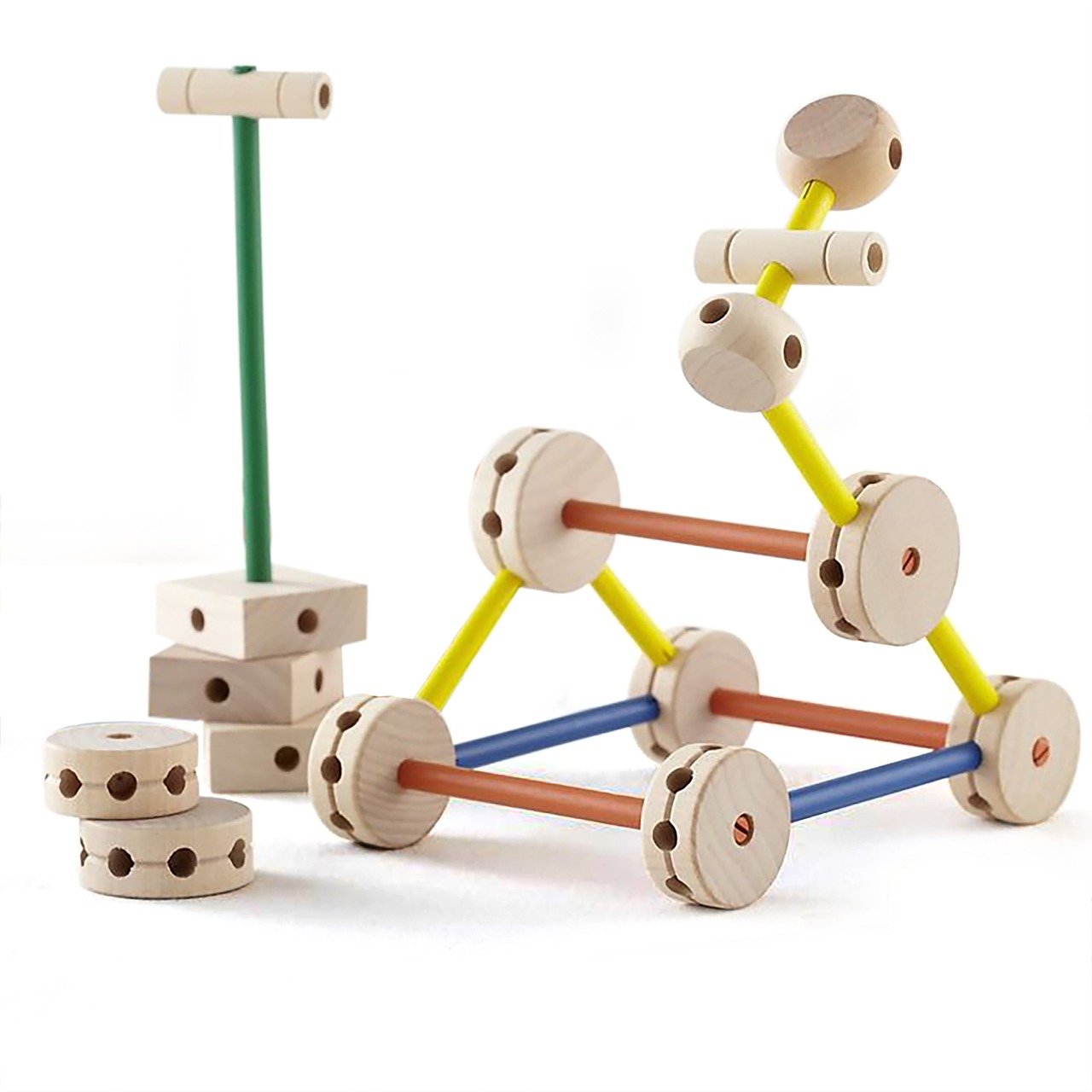
Brain Structure and Function
The human brain is a marvel of biological engineering, a complex organ that orchestrates our thoughts, emotions, and actions. Understanding how its structure and function contribute to consciousness is crucial when exploring the possibility of multiple consciousnesses existing within a single mind. The brain is generally divided into several key areas, each responsible for different aspects of our cognitive functions. For instance, the cerebral cortex is involved in higher-order functions like reasoning and decision-making, while the limbic system plays a significant role in emotions and memory.
Recent research has indicated that specific brain regions may be more active in individuals experiencing dissociative states or altered consciousness. This suggests that the brain's architecture might support the existence of multiple consciousnesses. For instance, studies using functional magnetic resonance imaging (fMRI) have shown distinct patterns of brain activity when individuals report different identities or states of consciousness. This activity often involves the interaction of various brain networks, indicating that consciousness may not be a singular experience but rather a tapestry woven from multiple threads.
To illustrate this further, let’s look at a simplified table that outlines some key brain regions and their functions related to consciousness:
| Brain Region | Function |
|---|---|
| Cerebral Cortex | Higher cognitive functions, reasoning, and decision-making |
| Limbic System | Emotion regulation, memory, and motivation |
| Thalamus | Relay sensory information and regulate states of consciousness |
| Brainstem | Control basic life functions, such as breathing and heart rate |
This table highlights how various brain regions contribute to our understanding of consciousness. The interplay between these areas can create a rich tapestry of experiences, which may lead to the phenomenon of multiple consciousnesses. For example, in individuals with Dissociative Identity Disorder (DID), different identities may correspond to varying levels of activity in these brain regions, suggesting that each identity could be linked to distinct neural pathways.
Moreover, the concept of neural correlates of consciousness is essential in this discourse. It refers to the specific brain states that correspond to conscious experiences. Neuroscientists aim to identify these correlates to understand better how different consciousnesses might coexist. When we consider altered states of consciousness, such as those induced by meditation or psychedelics, we see that they can lead to significant changes in brain activity. This raises the question: could these altered states provide a glimpse into the nature of multiple consciousnesses?
In summary, the structure and function of the brain offer a compelling framework for exploring the possibility of multiple consciousnesses. As we continue to decode the brain's mysteries, we may uncover deeper insights into our identity and the very essence of what it means to be conscious. The implications are profound, not only for psychology and philosophy but also for our understanding of the self and how it can be experienced in multiple ways.
- Can multiple consciousnesses exist in one mind? Yes, conditions like Dissociative Identity Disorder demonstrate that multiple identities can coexist within a single individual.
- What role does neuroscience play in understanding consciousness? Neuroscience investigates the brain's structure and functions to uncover the biological basis of consciousness.
- How do altered states of consciousness relate to multiple identities? Altered states can reveal different aspects of consciousness, suggesting the brain can support multiple experiences simultaneously.
- What are neural correlates of consciousness? These are specific brain states and activities that correspond to conscious experiences, helping researchers understand the nature of consciousness.
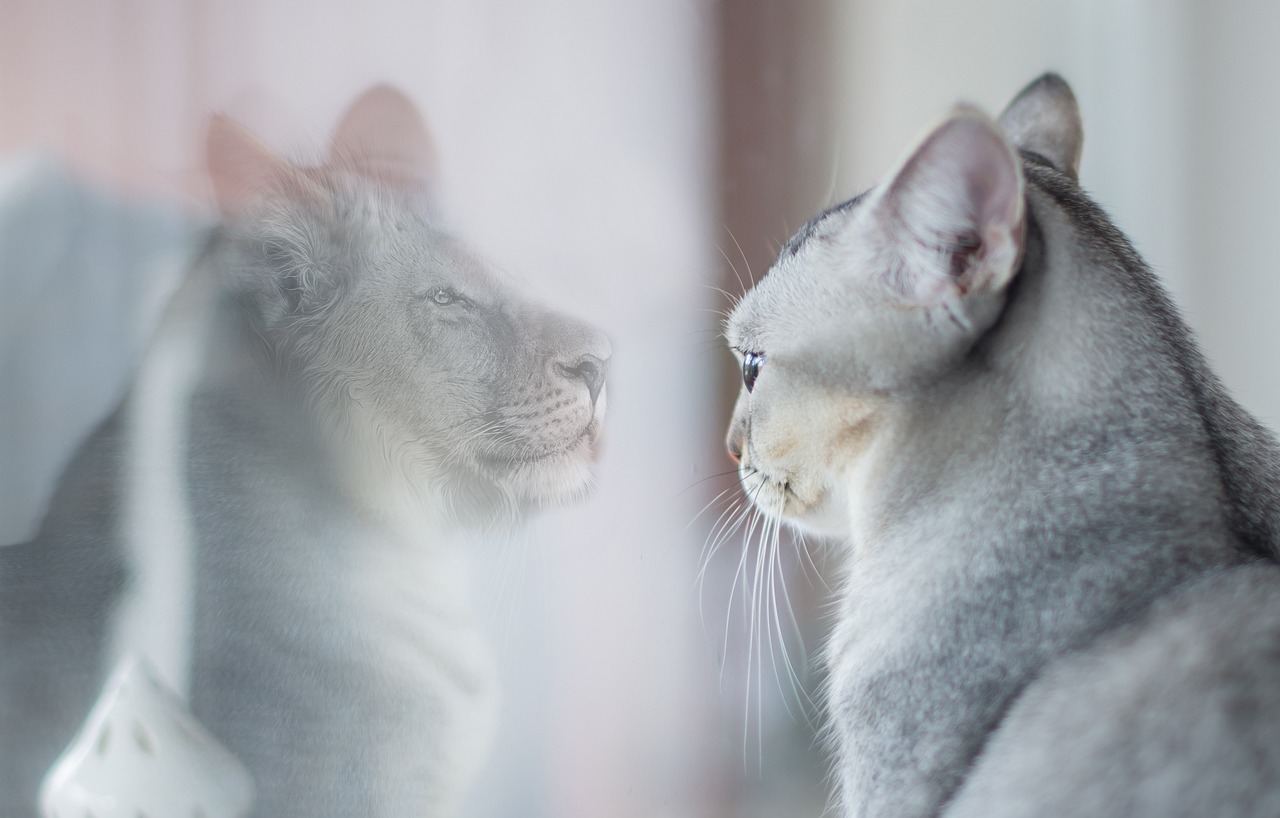
Neural Correlates of Consciousness
When we dive into the realm of consciousness, one of the most fascinating areas of study is the (NCC). This term refers to the specific brain states and processes that correspond to conscious experiences. Imagine consciousness as a symphony, where each note played represents a different aspect of our awareness. The brain, in this analogy, is the orchestra, with various sections working in harmony to create a cohesive experience. But what happens when the music gets a little chaotic? Can multiple symphonies play at once within the same orchestra?
Research in neuroscience has sought to uncover the specific brain regions and networks involved in conscious experience. Key areas include the prefrontal cortex, the parietal lobe, and the thalamus. Each of these regions plays a unique role:
- Prefrontal Cortex: This area is crucial for higher-order functions such as decision-making and self-awareness, contributing significantly to our sense of identity.
- Parietal Lobe: Responsible for integrating sensory information, it helps us perceive our environment and our place within it.
- Thalamus: Often referred to as the brain's relay station, it processes and transmits information from the senses to the appropriate cortical areas.
Studies have shown that when individuals experience altered states of consciousness—whether through meditation, sleep, or psychedelic substances—there is often a distinct pattern of neural activity. For example, during deep meditation, researchers have observed increased connectivity between the prefrontal cortex and other brain regions, suggesting a more unified state of consciousness that might allow for the emergence of multiple perspectives or identities.
Interestingly, the concept of NCC also raises questions about the potential for multiple consciousnesses to coexist. If different neural pathways can be activated simultaneously, could this mean that multiple conscious experiences can occur within a single individual? This idea aligns with observations made in individuals with Dissociative Identity Disorder (DID), where distinct identities may emerge, each with its own memories, behaviors, and even physiological responses. The brain scans of these individuals often reveal unique patterns of activity that correspond to their different identities, suggesting that their consciousness is indeed multifaceted.
However, the debate continues. Some neuroscientists argue that while our understanding of NCC has advanced, it still lacks a comprehensive explanation for the subjective experience of consciousness. The challenge lies in bridging the gap between the biological mechanisms of the brain and the rich tapestry of human experience. Can we ever fully map out the neural correlates of something as elusive as consciousness? Or are we merely scratching the surface of a deeper, more complex reality?
As we continue to explore this intricate landscape, it becomes evident that understanding the neural correlates of consciousness is not just about pinpointing brain regions. It's about unraveling the mysteries of our own identity and what it means to be a conscious being. The implications of this research extend far beyond the laboratory, prompting us to reconsider our definitions of self, identity, and even the nature of reality itself.
- What are neural correlates of consciousness?
Neural correlates of consciousness refer to the specific brain states and processes that correspond to conscious experiences. - Can multiple consciousnesses exist within one brain?
Research suggests that multiple identities can coexist in individuals with conditions like Dissociative Identity Disorder, where distinct neural patterns correspond to different identities. - How does meditation affect consciousness?
Meditation can enhance connectivity between brain regions, potentially leading to a more unified state of consciousness. - What brain areas are involved in consciousness?
Key areas include the prefrontal cortex, parietal lobe, and thalamus, each contributing to different aspects of conscious experience.
Frequently Asked Questions
- Can multiple consciousnesses exist in one mind?
Yes, the concept of multiple consciousnesses in one mind is explored through various lenses, including psychology, philosophy, and neuroscience. Conditions like Dissociative Identity Disorder (DID) provide tangible examples of how this phenomenon can manifest in individuals, suggesting that our understanding of consciousness is more complex than a singular experience.
- What is Dissociative Identity Disorder (DID)?
DID is a psychological condition characterized by the presence of two or more distinct personality states or identities within a single individual. Each identity may have its own name, age, history, and characteristics, leading to a fragmented sense of self. This disorder highlights the potential for multiple consciousnesses to coexist within one mind, often as a coping mechanism for trauma.
- How do altered states of consciousness relate to multiple consciousnesses?
Altered states of consciousness, such as those induced by meditation, hypnosis, or psychedelics, can provide insights into the nature of self and identity. These experiences can reveal different aspects of consciousness, suggesting that our perception of a singular self might be an oversimplification of a more intricate mental landscape.
- What philosophical theories address the concept of multiple consciousnesses?
Various philosophical theories explore the nature of self and identity in relation to multiple consciousnesses. For instance, dualism posits that mind and body are distinct, while materialism argues that consciousness arises from physical processes. These perspectives influence how we understand the possibility of multiple consciousnesses coexisting within one individual.
- How does neuroscience contribute to our understanding of consciousness?
Neuroscience provides a biological framework for understanding consciousness by examining brain structures and functions. Research has identified specific neural correlates of consciousness, which can help clarify whether multiple consciousnesses can exist simultaneously in the brain. This field continues to uncover the complexities of how our brain generates conscious experience.
- Are there any real-world examples of multiple consciousnesses?
Yes, individuals with Dissociative Identity Disorder often serve as real-world examples of multiple consciousnesses. Their experiences can vary widely, with distinct personalities emerging in response to specific triggers or situations. These case studies provide valuable insights into the complexities of identity and consciousness.
- What are the implications of understanding multiple consciousnesses?
Understanding multiple consciousnesses has profound implications for our perception of identity, mental health, and the human experience. It challenges traditional notions of a singular self, prompting us to reconsider how we define personal identity and the nature of consciousness itself.

